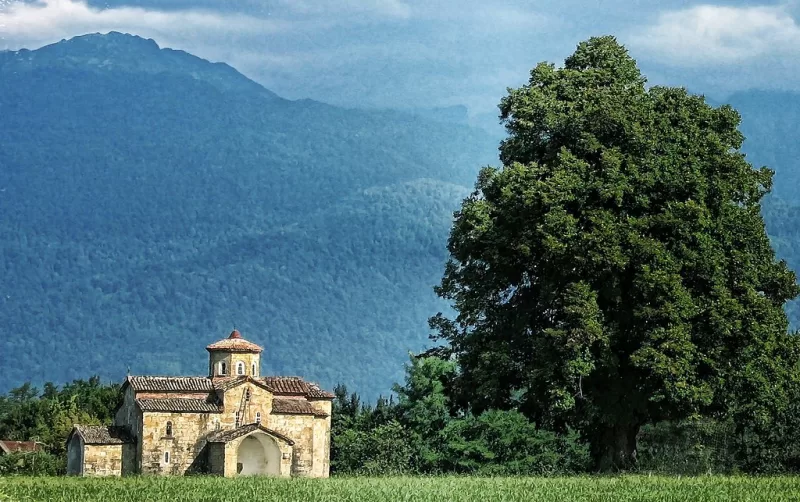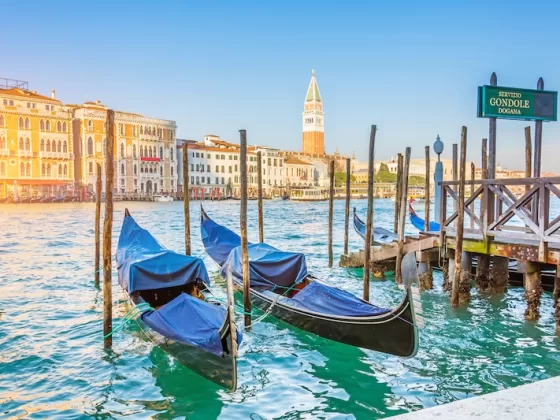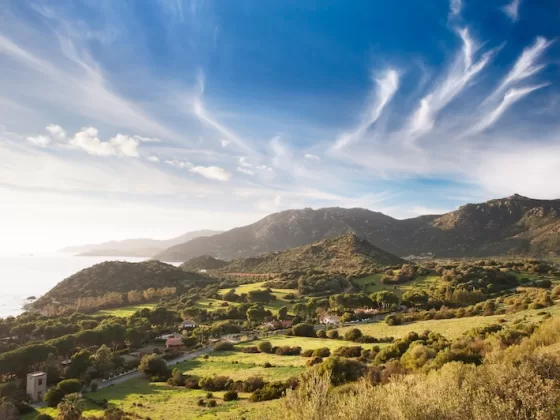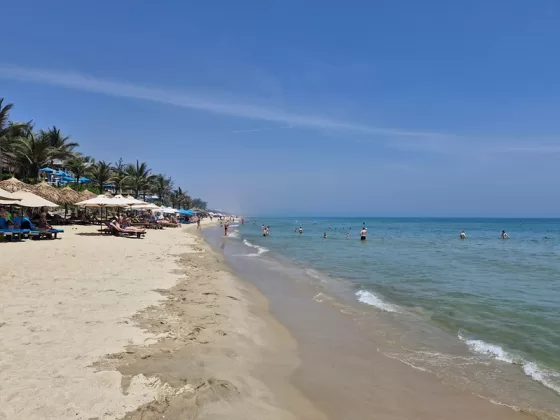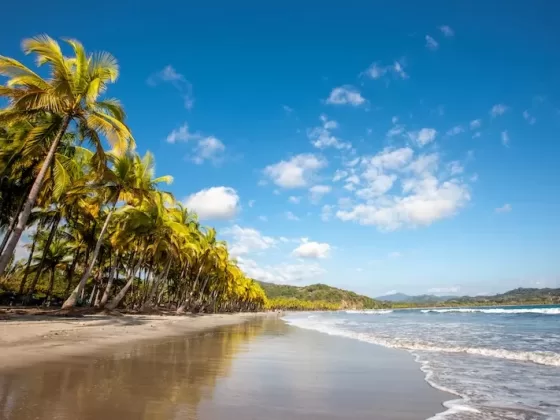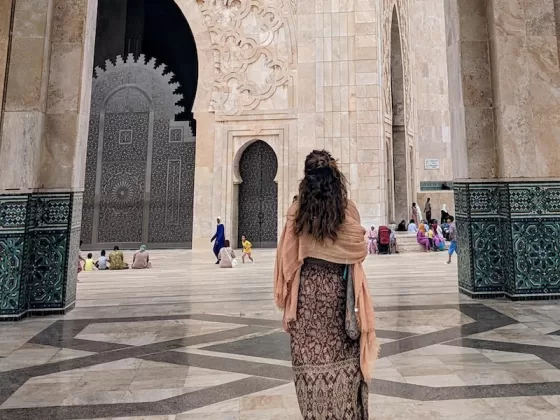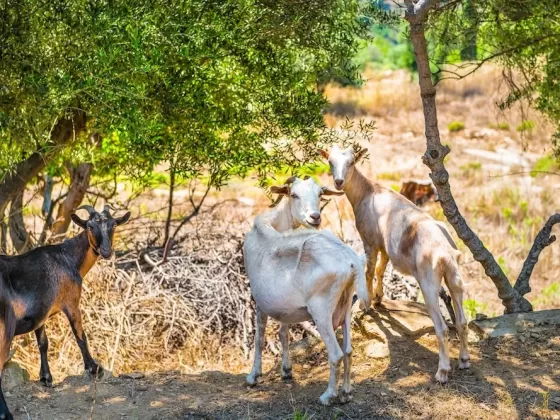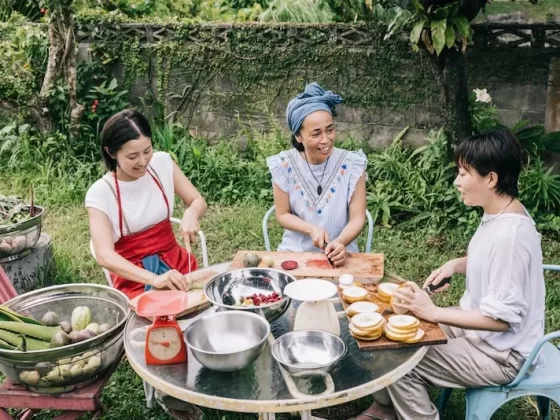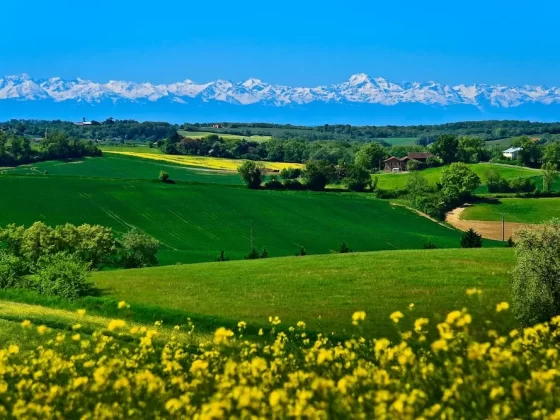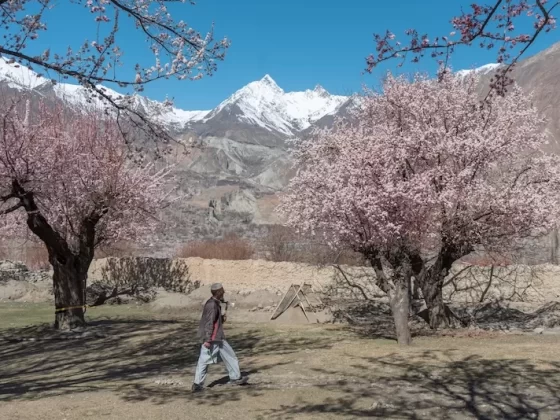Editors Note: There is some disagreement over the name of the region examined in this article. The use of the names South Ossetia and Tskhinvali are the subject of debate and the source of offense to some people from the region. For the purpose of this article, we have referred to the region as South Ossetia for the simple reason that the article’s main focus is on the self-proclaimed republic of South Ossetia since this is the name the people use when referring to themselves.
In the heart of the Caucasus Mountains, nestled right between Russia and Georgia is the self-declared nation of South Ossetia. It is a small region, which has been shaped by the political turmoil of its neighbors for the last couple of centuries. South Ossetia is one of the world’s most entangled territorial disputes, one that has led to its current complex political situation. It exists as an independent state with almost zero international recognition. South Ossetia is a part of a family of micronations that exist in an unofficial capacity but unlike the stability of similar places like Somaliland, South Ossetia finds itself in a bit of a sticker and more complex situation.
South Ossetia is at the crossroads of two contrasting worlds. On its southern side is the country of Georgia, which currently recognizes South Ossetia internationally, though in fact Georgia has no domain over South Ossetia. And while Georgia’s economy is thriving and has rapidly growing numbers of tourists visiting each year, on South Ossetia’s northern border is Russia. A nation increasingly being isolated from the global stage due to sanctions and political tensions.
Caught between these divergent paths is South Ossetia, a country whose future is uncertain.

Culture and History
The Ossetians are an ethnic group who are distinct from both Russians and Georgians. They are believed to have descended from a mix of Nomadic and indigenous populations in the North Caucasus. Their language, Ossetic, derives from the Iranian dialect which sets them apart from most of the other ethnic groups in the region. This unique cultural identity of the Ossetians is what ultimately shapes their desires for independence in modern times.
South Ossetia was incorporated into Georgia in the early 20th century. During the Russian Revolution which took place between 1917-1923. During the conflict, the Georgian government accusing the Ossetian people of collaborating with the Bolsheviks, which rested in mass discrimination and frequent pogroms causing an estimated 5,000 Ossetian deaths in the ensuing clashes. This perceived loyalty to the. Russians would continue to be a prevalent theme in the region and further incite the Ossetians to carve out their own territory.
Read more like this: Why Living Abroad Works
When Georgia was invaded by Russia and incorporated into the Soviet Union in 1921, so was South Ossetia. Many Georgians suffered greatly under Soviet rule but for Ossetians it was the first time they were granted cultural and political autonomy from Georgia. Ossetian became the official language of the region and the South Ossetian people gained improved access to services such as education and healthcare.
Following the collapse of the Soviet Union, South Ossetia became a part of the newly re-independent Georgia.
As anti-communist and nationalistic fervor swept through Georgia during this time, many Georgians again blamed the Ossetians for the crimes committed by the Soviet Union.
In 1989, Georgian president Zviad Gamsakhurdia made an infamously bellicose statement at a rally where he declared “Get rid of Ossetians in responsible positions, police and teachers first. I authorize you to search their homes and confiscate any weapons, daggers, big knives, or axes you find. There will be an end to South Ossetia.”
This clear incitement to violence was further propagated by the Georgian media. Frequent attacks on South Ossetians by Georgian gangs followed, and as these tensions escalated, the South Ossetian parliament formally declared its independence from Georgia in December 1990. The region broke out into war until a ceasefire was called in March 1992. Things remained tense and unresolved over the next few years as South Ossetia began exercising its newfound but unrecognized independence.
In 2004, Mikhail Saakashvili became president of Georgia and put an emphasis on reintegrating South Ossetia back into Georgia. In 2008 he launched an invasion of South Ossetia in order to reclaim the region, reassuring Ossetians that they had nothing to fear. Russia sent in troops to counter the Ossetians and a ceasefire was signed in 2008. The following week, Russia officially recognised South Ossetia’s independence—a move that was met with widespread international condemnation. In the following years, South Ossetia’s borders have remain unchanged, and they have become almost entirely dependent on Russia economically and diplomatically.

Battle for Recognition
Today the only access in and out of South Ossetia is through the Roki Tunnel which links South Ossetia to Russia’s North Ossetia-Alania province. The population of South Ossetia is approximately 53,000. Since 2008 four more countries have recognised South Ossetia’s independence, including Nicaragua, Venezuela, Syria and Naura. They have also received symbolic (though unofficial) recognition from Abkhazia, Transnistria, Artaskh and Somaliland.
South Ossetia has remained largely unrecognized by the international community primarily out of respect for Georgia’s territorial integrity. Since Georgia had very recently been recognized, additional recognition of South Ossetia’s independence could be viewed as a challenge of international law and set a precedent for other regions looking to declare their own independence.
Read more like this: The Top Expat Destinations 20 Years From Now
This geopolitical limbo has meant that South Ossetia has become entirely reliant on Russia for its economic survival. Limited trading options means almost all of the gas, electricity and food in South Ossetia is imported from Russia. The region’s poor infrastructure and struggling economy are made worse by its isolation from the broader international community..
The close ties with Russia also contribute to Western countries not wishing to engage with or recognize South Ossetia in any capacity, even though many argue that international recognition for South Ossetia could actually serve to open the country’s options and allow it to orient itself economically towards Georgia, thus liberating them from total Russian dependency.
The fact that South Ossetia relies so heavily on Russia for its survival but at the same time that reliance is precisely what is preventing it from developing a more self-sufficient future is a strange paradox not lost on people of the region.
The recognition of South Ossetia by the international community could offer a path toward greater autonomy and an opportunity to engage with the wider world, which could, in turn, offer economic benefits and political leverage. Recognition could also provide access to international markets, foreign investment, and development aid.

Can You Visit South Ossetia?
Visiting South Ossetia can be complicated, made even more so since Russia’s invasion of Ukraine in 2022 led to heavy sanctions on Russia. Despite this, South Ossetia is situated in a region with an ancient history, a unique culture and an incredible landscape, which has been a draw for tourists over the last number of years.
There is no airport in South Ossetia and the border with Georgia is completely closed (it’s technically illegal to enter South Ossetia under Georgian law), which means one can only enter the country from Russia.
Unlike many other self-declared nations, South Ossetia does not issue its own visas but rather accepts Russian visitor visas. Citizens that are exempt from Russian visa requirements are required to receive approval from the South Ossetian government before visiting. South Ossetia issues passports to its own citizens but these can only be used to go in and out of Russia from South Ossetia.
Meanwhile, Georgia and its neighboring countries, including Armenia and Azerbaijan, are becoming popular travel destinations for many. In Georgia, tourism is at an all time high with numbers growing each year. However, the lack of access into South Ossetia from the Georgian side hampers the accessibility of South Ossetia to this tourist boom considerably. To make matters worse, since the sanctions were put on Russia in 2022 many tour companies that operated tours of South Ossetia out of Russia have ceased to offer these tours. South Ossetia might have a lot to offer, but accessing the country is hard and requires careful planning.
All of which means that most of the tourists who do visit South Ossetias are Russian. Large numbers of Russian tourists came to visit South Ossetia during Covid-19 when international flights were not running and they continue to do so.
Because South Ossetia is littered with ornate Christian churches that are hundreds of years old religious tourism has become very popular in the area. Sites such as The Bieti Monastery, Eredvi Basilica, Tigva Monastery, Tiri Monastery and Tsirkoli Church are listed by Georgia (who claims that these are all in Georgian territory) as “Immovable cultural monuments of national significance”
South Ossetia’s capital city, Tskhinval, is a quiet town of 30,000 people, with limited numbers of hotels, bars and restaurants.
The Armenian Church is one of the most notable landmarks in the capital. Like the city itself, it does not appear grandiose at first glance, but it has a rich and fascinating 300 year old history. For a while it was turned into a museum during the Soviet era but was resumed as a church in the 1990s.
The National Museum gives a deeper understanding of the region outside of just the conflicts of the last century. Its collection of ancient artifacts beautifully highlights the cultural heritage of the Ossetian people of the region.
The city also has an Armenian district centered around Armenian Street where you can find Armenian shops and Armenian food.
The Portal Art Space in Tskhinval is one of the more contemporary cultural activities in the city. A space where local artists showcase their work, there are exhibitions, talks, discussions and classes held here that blend Ossetian culture with contemporary arts culture.
There is a sporadic Street Art Festival held in Tskhinval. Started by a young graffiti artists in 2017 who hoped to brighten up the town, the festival has been held on and off every few years since, and showcases artists from the region.
South Ossetia’s charms encompass more than just its cities. Its mountains are a huge attraction, perfect for hiking and exploring the ancient monasteries and churches of the area. A number of Russian based travel companies offer packaged tours which include trips around the mountains.

The Future of South Ossetia
Unlike other micronations such as Somaliland, worldwide recognition does not appear to be in the cards for South Ossetia anytime soon. As a consequent, it’s likely to continue to suffer considerably.
It seems unlikely that South Ossetia will willingly rejoin Georgia, but as the Georgian economy and tourism industry booms, it might force their hand. Rejoining Georgia would open South Ossetia up to the tourism boom that is occurring in central Asia which could be a powerful boon to the nation’s economy. It would also open the country up to international aid and investment. Georgia itself is facing its own political turmoil as mass street protests have taken place over the last few years over concerns about the country growing closer ties with Russia. South Ossetia’s future will probably be dictated by how Georgia’s relationship with Russia develops in the future.
On one hand, South Ossetia has been profoundly shaped by the many geopolitical conflicts it has experienced, yet it also feels strangely far removed from them. Ossetians and visitors alike all describe South Ossetia much the same way—as a stunning land with hospitable people and quaint villages and monasteries.
Stay updated with the latest news and trends from around the world. Subscribe now for in-depth analysis and real-time updates!
